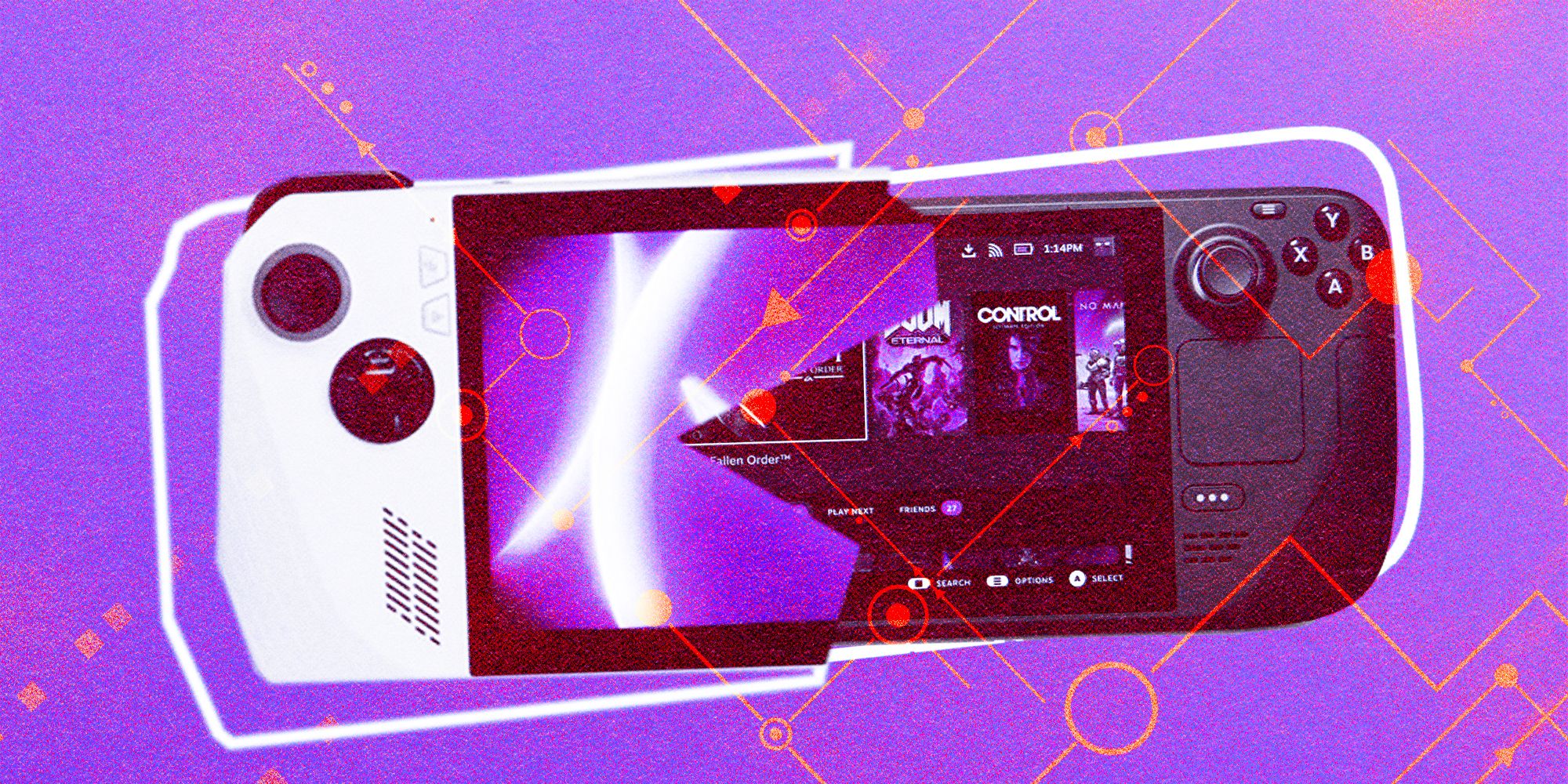Valve’s Steam Deck wasn’t the first attempt at making a handheld gaming PC, it was just the most successful. The Ayaneo 2 is widely considered to be its closest competitor, but though on paper its specs are superior to the Steam Deck, it has flaws, with its battery life and price being the biggest hurdles in achieving its main competitor’s level of success. It also has localisation issues, as a Chinese-made product, which could put off its Western demographic.
There are plenty of other handheld consoles out there, but not as many that can run Windows or Linux. A new contender is entering the ring, though – ASUS is launching the ROG Ally under its Republic of Gamers label. We don’t know the specs yet, but it’s running on a custom AMD chip and is compatible with ASUS laptop external GPU and power supply unit, the ROG XG Mobile eGPU. Apparently, its custom APU is the fastest APU to optimise gameplay performance.
The system has a 1920x1080 and 120hz display, which is higher than the Steam Deck’s 800p resolution and twice the refresh rate. The dual fans on the ROG are much quieter than those of the Steam Deck, by 17 decibels. It’s also smaller and lighter than the Steam Deck. The unwieldy nature of the Valve handheld is a big factor in why people might opt for other handheld consoles – it’s almost a foot wide and weighs over half a kilogram. For users that consider portability a major factor in their purchases, the slightly more diminutive ROG Ally might be preferable.
There are a number of other factors that will affect whether or not Ally will be able to compete. One of them is battery life, which is where many handheld gaming PCs have faltered. The Aya Neo 2 has an impressive display and much more power than the Steam Deck, but needs a lot of power to support it.
The ROG Ally, with its higher resolution, may have the same problem and will have to juggle performance with battery life to compete with the Steam Deck effectively. The Steam Deck doesn’t have great battery life either, with Valve claiming that it lasts anywhere from two to eight hours, but it’s been known to drain faster than that. The ROG Ally could gain a huge advantage if it has better battery life alongside better resolution.
The biggest factor, however, will be price. The reason I don’t personally own a Steam Deck is that I’m not absolutely rolling in cash. Thanks to its superior specs and ROG’s penchant for pricey peripherals, it’s likely that the ROG Ally, if it manages to nail resolution and battery life, will have a far higher price point than the Steam Deck, and that’s going to affect its competitiveness in the market.
That would be a shame. Without a good competitor, we’ll never see prices for handheld PC consoles driven down, and without lower prices, the Steam Deck and others like it won’t be able to find a place in the mainstream consumer market. Plenty of people own Steam Decks, and there’s lots of demand for it, but consider that the cheapest Steam Deck is more expensive than the most expensive Switch. We’re watching supply and demand at work, folks. We can only wait and see if the ROG Ally is the one to end Valve’s chokehold on this market.



